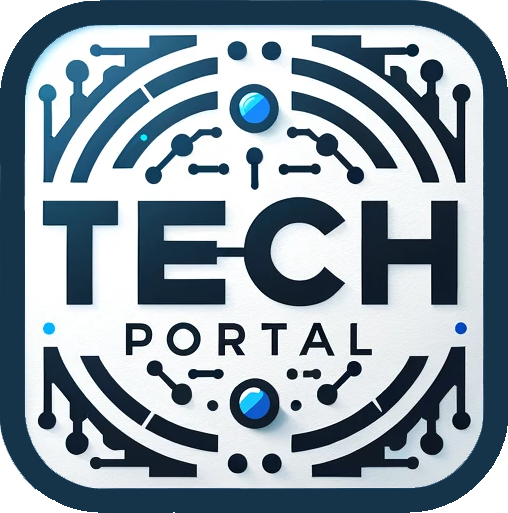Cryptocurrencies are digital currencies based on blockchain technology . They are independent of central banks and governments. Bitcoin , the first cryptocurrency, appeared in 2009.
By June 2023, there were over 25,000 cryptocurrencies . More than 40 of them had a market capitalization of over $1 billion. Cryptocurrencies are considered an asset class. They have experienced significant growth and declines in recent years.

Key findings
- Cryptocurrencies are based on decentralized blockchain technology and are independent of central banks.
- The first cryptocurrency, Bitcoin , was introduced in 2009 and to date, over 25,000 different cryptocurrencies have been created.
- Cryptocurrencies are considered a separate asset class and are subject to strong price fluctuations.
- Blockchain technology offers advantages such as faster and more cost-effective transactions.
- Cryptocurrencies also carry risks such as volatility, high energy consumption , and links to illegal activities.
The evolution of cryptocurrencies since Bitcoin
Bitcoin was launched in 2009. It was the first digital currency without a central bank. It uses SHA-256 and was developed by Satoshi Nakamoto.
After Bitcoin came Namecoin (2011) and Litecoin (2011). They brought new features, thus growing the world of cryptocurrencies.
The emergence of the first blockchain
Blockchain technology was a major advance. It makes transactions secure and transparent. No central authority is needed.
Important milestones in development
- In 2015, Ethereum introduced smart contracts , enabling automated contracts and decentralized apps.
- Proof-of-Stake, DeFi , and NFTs were added later, expanding the possibilities of blockchain .
- Cryptocurrency acceptance is growing, bringing the industry into a new phase.
The current state of technology
Today, blockchain technology is developing rapidly. There are many new ideas and applications. The future of cryptocurrencies is full of opportunities and challenges.
Basic functioning of blockchain technology
Blockchain technology is changing how we transact online. It’s a decentralized database that stores crypto transactions . Each block is linked to the previous one, making data manipulation difficult.
At the heart of the system is the decentralized ledger . It documents all transactions clearly and immutably. No central authority controls the data. Instead, all participants jointly verify its integrity.
Thanks to blockchain , crypto transactions are transparent, secure, and decentralized. They are the basis for new applications such as cryptocurrencies and smart contracts .
„Blockchain is the technology of the future that has the potential to fundamentally change our understanding of trust, transparency, and security in the digital age.“
Security and legal issues must be considered when using blockchain technology. This is how blockchain technology can be fully utilized and transform our digital world.
Understanding the crypto ecosystem
The crypto ecosystem consists of many components, such as cryptocurrencies and blockchain networks. It also includes exchanges and wallets. It’s a complex system that has transformed the digital world.
Decentralized networks
At the heart of the crypto ecosystem are decentralized networks. They enable direct communication without the need for a central authority. This peer-to-peer structure is bringing about a major change in the financial world.
Consensus mechanisms
Consensus mechanisms exist to protect the security of networks . The Proof-of-Work algorithm is well-known in cryptocurrencies like Bitcoin. Proof-of-Stake is a different model that saves energy and is more scalable.
Smart contracts and their applications
Smart contracts are an important part of the ecosystem. They are automated agreements that execute transactions. Decentralized applications (DApps) enable new financial products and business models.
„The crypto ecosystem is synonymous with innovation and the pursuit of decentralization in the digital world.“
Top cryptocurrencies at a glance
The world of cryptocurrencies is very dynamic and diverse. Bitcoin and Ethereum are the leading cryptocurrencies. They have high market capitalizations. There are also many altcoins with different functions.
Stablecoins like Tether and USD Coin are becoming increasingly popular. They are good for trading and storing value.
The crypto market has over 10,000 cryptocurrencies. The top 20 account for approximately 90% of the market. Bitcoin has been the market leader since 2009, with a market capitalization of over $370 billion.
Ethereum is the second-largest cryptocurrency. It enables decentralized applications and has a market capitalization of approximately $180 billion.
| Cryptocurrency | Market capitalization (in billion USD) | Price (in USD) |
|---|---|---|
| Bitcoin (BTC) | 370 | 19,000 |
| Ethereum (ETH) | 180 | 1,300 |
| Tether ( USDT ) | 100 | 1.00 |
| Binance Coin (BNB) | 83 | 310 |
| USD Coin ( USDC ) | 33 | 1.00 |
There are many other major cryptocurrencies. Cardano , Solana , Litecoin , Ripple , and Dogecoin are examples. They offer new solutions and specialized features.
Cryptocurrency prices are determined by supply and demand. Regulations, technological advances, and market sentiment all have a significant impact on prices.
Crypto wallets and security
Crypto wallets are important for securely storing and managing digital assets. There are hardware and software wallets, each with different security features. Hardware wallets are offline and therefore very secure, while software wallets are easier to use but more vulnerable to cyberattacks.
Hardware vs. software wallets
Hardware wallets like Ledger and Trezor are very secure. They store private keys offline, thus protecting against online hackers. They can support over 1,300 cryptocurrencies. In contrast, software wallets like Coinbase are easier to use but more vulnerable to hacks.
Security measures for investors
It’s important to choose the right wallet type and take additional security measures. This includes storing private keys securely and using two-factor authentication. Regular software updates are also essential to protect crypto assets.
| Wallet type | Supported coins | Security features |
|---|---|---|
| Ledger hardware wallet | Over 1,300 cryptocurrencies | Offline storage, two-factor authentication |
| Trezor hardware wallet | Over 1,100 cryptocurrencies | Offline storage, physical button protection |
| Metamask software wallet | Over 450,000 Ethereum -based tokens | Compatibility with DeFi applications |
| Coinbase software wallet | Over 150 cryptocurrencies | Easy to use, custody insurance |
„I was hacked in January and lost thousands of euros worth of NFTs . Since then, I’ve been using a Ledger hardware wallet and finally feel secure enough to sleep well.“
Safely storing digital assets is very important for crypto investors. Hardware wallets offer a significant security advantage over software wallets, making them a good choice.
Regulation and legal aspects in Germany
Germany has established regulations for cryptocurrencies. BaFin considers cryptocurrencies such as Bitcoin and Ether to be financial instruments. The 2020 Cryptoasset Act regulates trading and custody in Germany.
To offer crypto services, you need a BaFin license. Exchanges like Bitpanda, Bison, and Coinbase have these. But you can also use exchanges without a license.
Profits from crypto trading are taxable if you don’t hold them for long. Those who hold crypto for more than a year pay no taxes. There’s an exemption limit of €256 for staking and lending.
The MiCA regulation will come into force in 2024. It will introduce stricter rules for crypto services and create a European legal framework.
| Regulatory aspect | Description |
|---|---|
| Crypto regulation | BaFin classifies cryptocurrencies as financial instruments. Companies require a BaFin license to trade crypto assets. |
| Cryptoasset law | The law passed in 2020 regulates the custody and trading of crypto assets in Germany. |
| Taxes on crypto profits | Profits from cryptocurrencies are tax-free after a holding period of one year. There are tax-free allowances for staking and lending. |
| MiCA Regulation | From the end of 2024, the EU-wide MiCA regulation will apply in Germany and introduce stricter regulations for crypto service providers. |

Germany has laid a foundation for cryptocurrencies. This protects the industry but imposes requirements. The MiCA regulation will further shape the legal framework.
Crypto exchanges and trading platforms
The world of crypto exchanges and trading platforms offers investors many options for entering the crypto market. The various exchanges differ in their functionality, security, and regulation .
Centralized vs. Decentralized Exchanges
Centralized crypto exchanges ( CEXs ) like Binance and Coinbase are easy to use. They offer plenty of liquidity. They mediate between buyers and sellers.
Decentralized exchanges ( DEXs ) like Uniswap enable direct peer-to-peer trading and offer more control over assets.
Selection criteria for trading venues
Many factors are important when choosing a crypto exchange . Security, fees, trading pairs, and regulation are among them. Bitget, for example, offers low fees and a wide range of cryptocurrencies.
| platform | Strengthen | Weaken |
|---|---|---|
| Binance | High liquidity, large selection of cryptocurrencies | More complex user experience |
| Octopus | Renowned provider with high security | Slightly higher fees |
| eToro | User-friendly interface, social trading features | Limited supply of cryptocurrencies |
| KuCoin | Wide range of altcoins , low fees | More complex user experience |
Crypto exchanges and trading platforms are ideal for day trading , swing trading , or long-term investments. They offer many opportunities to profit from the crypto market.
Investment strategies in the crypto market
There are many ways to invest in the crypto market. You can invest in crypto investments , hodling , or trading . One important strategy is to invest in different cryptocurrencies. This spreads the risk.
„Hodling“ means holding cryptocurrencies for a long time, even when the price fluctuates. Another approach is dollar-cost averaging . Here, you regularly invest the same amount of money to mitigate risk.
There are many options for active traders. You can use technical and fundamental analysis to trade. Some use trend following, swing trading , or scalping. But you have to be careful because the market is very volatile.
It’s important to familiarize yourself with the crypto market. You should have a clear strategy. This will help you make better decisions and win more.
Mining and staking opportunities
The world of cryptocurrencies depends on two technologies: crypto mining and staking. Crypto mining is important for proof-of-work networks like Bitcoin. Staking, on the other hand, is more energy-efficient and secure for proof-of-stake systems like Ethereum 2.0 and Cardano.
Proof of Work vs. Proof of Stake
Proof of Work (PoW) was introduced by Bitcoin. Miners solve complex problems to validate new blocks. Well-known PoW cryptocurrencies include Bitcoin and Litecoin.
Proof of Stake (PoS) is based on staking cryptocurrencies. Users act as validators. This process is more energy-efficient and secure than PoW. Ethereum 2.0, Cardano, and Polkadot are well-known PoS projects.
Energy efficiency and sustainability
The high energy consumption of proof-of-work systems raises environmental concerns. Staking-based systems like Ethereum 2.0 significantly reduce power consumption, contributing to a more sustainable crypto industry.
| Cryptocurrency | consensus mechanism | Staking opportunities |
|---|---|---|
| Ethereum 2.0 | Proof of Stake | Staking ETH tokens |
| Solana | Proof of Stake | Staking of SOL tokens |
| Cardano | Proof of Stake | Staking ADA tokens |
| Polkadot | Proof of Stake | Staking DOT tokens |
Many cryptocurrencies, such as Tron (TRX), Tezos (XTZ), and Cosmos (ATOM), offer staking opportunities. Investors can earn additional income by holding and staking coins.
Crypto mining and staking are important for the digital financial world. The energy-intensive proof-of-work system remains, but proof-of-stake is becoming increasingly popular and more environmentally friendly.
DeFi – Decentralized Financial Products
The world of decentralized finance (DeFi) is growing rapidly. It offers new ways to deliver blockchain-based financial services. This technology could completely transform the financial sector.
DeFi applications use smart contracts . They enable direct interaction between users, without central authorities. These include decentralized exchanges, lending platforms, yield farming , and liquidity mining . They promise high returns, but also carry risks.
The DeFi ecosystem stands for decentralization, openness, accessibility, and transparency. It offers numerous financial applications designed to enhance traditional means. DApps are at the heart of this sector, enabling financial services without centralized control.
DeFi is still small, but it’s growing rapidly. It could play a major role in the global financial system.
| DeFi applications | Description |
|---|---|
| Decentralized exchanges (DEXs) | Enable direct trading of cryptocurrencies between users without a central custodian. |
| Decentralized lending and savings platforms | Offer users the opportunity to borrow or earn interest on crypto assets. |
| Yield farming and liquidity mining | Strategies to achieve high returns by providing liquidity in DeFi protocols. |

„DeFi has the potential to fundamentally transform the traditional financial sector by decentralizing financial services and making them accessible to everyone.“
The DeFi ecosystem offers exciting opportunities to revolutionize the financial system. Investors who consider the opportunities and risks can benefit from these innovations.
NFTs and digital assets
Non-fungible tokens , or NFTs for short , are unique digital assets. They are based on blockchain technology. Unlike cryptocurrencies like Bitcoin, which can be exchanged, each NFT has its own identity.
This trend is gaining popularity in digital art, collectibles, and virtual gaming.
Current trends and developments
NFTs experienced a boom in 2021, with millions of digital artworks sold, demonstrating their popularity as collectibles and investments.
Current developments include the use of NFTs in the metaverse . They are also being used for identity and access management.
Areas of application of NFTs
NFTs are used in many areas:
- Digitale Kunst: Künstler können ihre Werke als einzigartige NFTs verkaufen.
- Sammlerstücke: NFTs dienen als Zertifikate für seltene Sammlerobjekte.
- Gaming: In Spielen sind NFTs als einzigartige Gegenstände oder Charaktere.
- Virtuelle Immobilien: NFTs repräsentieren den Besitz von Grundstücken im Metaverse.
- Identitäts- und Zugriffsmanagement: NFTs helfen bei der Verwaltung digitaler Identitäten und Zugriffsrechten.
Die Vielfalt der Anwendungsbereiche zeigt das große Potenzial von NFTs.
Stablecoins und ihre Bedeutung
Stablecoins sind digitale Währungen, die an Fiat-Währungen wie Euro oder Dollar gebunden sind. Sie bieten Stabilität in den schwankenden Kryptomärkten. Tether (USDT) und USD Coin (USDC) sind beliebt und werden von Regulatoren überwacht.
Der Stablecoin-Markt wächst und erreicht über 162 Milliarden US-Dollar. Tether (USDT) ist mit über 112 Milliarden US-Dollar Marktkapitalisierung sehr wichtig. Binance USD (BUSD) und DAI sind auch für Handel und Wertspeicherung wichtig.
Die Stabilität von Stablecoins wird durch verschiedene Methoden sichergestellt. Fiat-collateralized Stablecoins wie USDC und BUSD werden durch Fiatwährungen abgesichert. Crypto-collateralized Stablecoins wie DAI nutzen Krypto-Assets als Sicherheit. Algorithmische Stablecoins nutzen komplexe Algorithmen zur Preissteuerung.
Der regulatorische Rahmen für Stablecoins wird immer wichtiger. In Europa muss die MiCA-Regelung sicherstellen, dass Vermögenswerte von Drittparteien verwahrt werden. Es muss ein 1:1-Verhältnis zwischen Vermögenswerten und ausgegebenen Münzen bestehen.
| Stablecoin | Sicherung | Marktkapitalisierung |
|---|---|---|
| Tether (USDT) | Fiat-collateralized | über 112 Milliarden US-Dollar |
| USD Coin (USDC) | Fiat-collateralized | über 55 Milliarden US-Dollar |
| Binance USD (BUSD) | Fiat-collateralized | über 19 Milliarden US-Dollar |
| DAI | Crypto-collateralized | über 6 Milliarden US-Dollar |
Stablecoins sind ein wichtiger Teil des Krypto-Ökosystems. Sie bieten Stabilität in schwankenden Märkten. Die Regulierung wird immer wichtiger, um Sicherheit und Transparenz zu gewährleisten.
Risiken und Herausforderungen
Kryptowährungen sind eine spannende Technologie, die neue Wege eröffnet. Doch sie bringen auch Risiken mit sich. Eine große Herausforderung ist die Marktvolatilität, die das Risiko für Anleger erhöht.
Technische Probleme wie Skalierbarkeit und Sicherheitsrisiken, wie 51%-Angriffe, sind ebenfalls ein Problem.
Volatilität und Marktrisiken
Kryptowährungen haben oft starke Preisänderungen. Das macht Investitionen in diesem Bereich riskant. Kryptowährungen wurden oft für illegale Aktivitäten wie Geldwäsche missbraucht.
Die anonymen Transaktionen und die fehlende Regulierung bieten Straftätern Möglichkeiten für solche Aktivitäten.
Technische Herausforderungen
Es gibt technische Hürden zu überwinden. Die große Anzahl an Kryptowährungen (über 10.000, Stand: Oktober 2024) macht Skalierbarkeit schwierig.
Sicherheitsrisiken wie 51%-Angriffe, bei denen Einzelpersonen das Netzwerk kontrollieren können, sind gefährlich. Auch die Energieeffizienz und Nachhaltigkeit der Technologie werden oft kritisiert.
| Risiko | Beschreibung |
|---|---|
| Marktvolatilität | Extreme Kursschwankungen erhöhen die Anlagerisiken |
| Kriminelle Aktivitäten | Missbrauch für Geldwäsche, Terrorismusfinanzierung etc. |
| Skalierbarkeit | Herausforderung durch tausende verschiedener Kryptowährungen |
| Sicherheitsrisiken | Gefahr von 51%-Angriffen und Zentralisierung |
| Energieverbrauch | Hoher Energiebedarf vieler Krypto-Netzwerke |
Kryptowährungen haben trotz ihres Potenzials noch Probleme. Anleger sollten diese Risiken genau bedenken, bevor sie investieren.
Zukunftsperspektiven der Kryptowährungen
Die Zukunft der Krypto-Zukunft sieht vielversprechend aus. Neue Technologien und eine breitere Blockchain-Adoption stehen an. Auch institutionelle Investoren zeigen mehr Interesse, was die Akzeptanz steigern könnte.
Blockchain-Technologie könnte in viele Industriezweige integriert werden. Bereiche wie Logistik, Gesundheitswesen, Immobilien und Finanzdienstleistungen könnten davon profitieren. Dies könnte die Entwicklung und Akzeptanz von Kryptowährungen stark beeinflussen.
Digitale Zentralbankwährungen (CBDCs) könnten die Kryptowährungswelt in den nächsten Jahren verändern. Ihre Ausgestaltung und Regulierung sind entscheidend. Sie könnten sowohl Konkurrenz als auch neue Möglichkeiten bieten.
Regulatorische Entwicklungen werden die Zukunft des Krypto-Sektors prägen. Eine ausgewogene Regulierung könnte die Akzeptanz fördern. Übermäßige Regulierung könnte das Wachstum jedoch behindern.
„Die Zukunft der Kryptowährungen hängt eng mit der Weiterentwicklung der Blockchain-Technologie zusammen. Je mehr Anwendungsfälle und Akzeptanz, desto größer das Potenzial für Krypto-Investitionen.“
| Kryptowährung | Preisprognose bis 2030 |
|---|---|
| Bitcoin | Bis 2025: Mindestens 55.762 USD |
| Ethereum | Bis 2025: Über 10.000 USD |
| Dogecoin | Bis 2025: 1 USD |
| Shiba Inu | Bis 2030: 0,00090 USD |
Steuerliche Aspekte bei Krypto-Investments
Die Besteuerung von Kryptowährungen in Deutschland ist komplex. Man muss sorgfältig berichten und genau buchen. Nach dem Einkommensteuergesetz gelten Kryptowährungen als „sonstige Wirtschaftsgüter“.
They are treated like collectibles, wine, or gold. Crypto gains are not taxable after one year. Short-term gains, however, are taxable. The tax depends on income and can range from 0% to 45%.
Crypto transactions , such as crypto-to-crypto trades, can involve taxable events. Accurate documentation of all crypto activities is therefore important. Specialized software can help simplify crypto accounting and tax reporting .
Compared to other countries, Germany offers tax advantages for crypto investors. There are annual tax allowances for crypto gains and the option to offset losses against gains. With the right strategy and documentation, crypto investors can benefit from these advantages and optimize their crypto taxes .
FAQ
What are cryptocurrencies?
When and how was the first cryptocurrency introduced?
How has the crypto market developed in recent years?
FAQ
What are cryptocurrencies?
Cryptocurrencies are digital currencies based on blockchain technology. They are independent of central banks and governments.
When and how was the first cryptocurrency introduced?
Bitcoin, the first cryptocurrency, was introduced by Satoshi Nakamoto in 2009.
How has the crypto market developed in recent years?
There are over 25,000 cryptocurrencies in existence today. More than 40 have a market capitalization of over $1 billion. Cryptocurrencies are considered an asset class and have experienced periods of growth and decline.
How does blockchain technology work?
Blockchain is a decentralized database. It stores transactions in blocks. Each block is linked to the previous one, preventing data manipulation. Cryptographic methods secure the data.
What components does the crypto ecosystem include?
The crypto ecosystem encompasses cryptocurrencies, blockchain networks, exchanges, and wallets. Decentralized networks enable direct transactions. Consensus mechanisms such as proof-of-work and proof-of-stake ensure network integrity. Smart contracts automate agreements.
What are the leading cryptocurrencies?
Bitcoin and Ethereum lead by market capitalization. Altcoins like Litecoin offer alternative functions. Stablecoins like Tether are important for trading and storing value.
How secure are crypto wallets?
Crypto wallets are important for storing cryptocurrencies. Hardware wallets are more secure because they are offline. Software wallets are more convenient but more vulnerable to hacks.
What is the legal situation of cryptocurrencies in Germany?
Germany has a framework for cryptocurrencies. BaFin considers them financial instruments. The Cryptoasset Act regulates custody and trading. Companies require a BaFin license.
What investment strategies are there in the crypto market?
There are various strategies, from long-term holding to active trading . Diversification and dollar-cost averaging are popular. Technical and fundamental analysis aid trading decisions.
How do mining and staking work?
Mining secures networks like Bitcoin by solving problems. Proof-of-Stake, like Ethereum’s, is more energy-efficient. Staking enables passive income by validating transactions.
What are decentralized finance (DeFi) products?
DeFi offers financial services on blockchain. These include decentralized lending platforms and stablecoins. Yield farming and liquidity mining offer high returns but carry risks.
What are non-fungible tokens (NFTs)?
NFTs represent unique digital assets. They are used in digital art, collectibles, and virtual real estate. NFTs experienced a boom in 2021.
What are stablecoins and what is their significance?
Stablecoins are cryptocurrencies whose value is pegged to fiat currencies. They provide stability and facilitate trading and value storage. Tether and USD Coin are popular.
What risks do cryptocurrencies pose?
Cryptocurrencies are highly volatile, which poses risks. Technical challenges and regulatory uncertainties are further risks.
What does the future of cryptocurrencies look like?
The future promises technological innovations and broader adoption. Institutional investors are showing interest. Integration into various industries could bring new use cases.
How are cryptocurrencies taxed in Germany?
Crypto gains after one year are tax-free. Short-term gains are subject to income tax. Accurate reporting and accounting are important.
